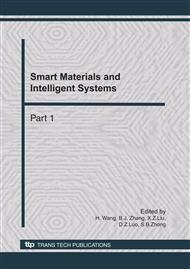p.910
p.915
p.920
p.925
p.929
p.933
p.938
p.944
p.949
Studying of Fuzzy Logic Control for Semi-Active Suspension Based on Improved Genetic Algorithm
Abstract:
Establishing a 2-DOFs of 1/4 semi-active suspension system model, using genetic algorithm approach, to design fuzzy logic controller of the semi-active suspension and simulate in the environment of Matlab/Simulink. The results of being compared with the passive suspension demonstrate is that this developed fuzzy logic controller based on genetic algorithm enhances the performance of the full car suspension system significantly.
Info:
Periodical:
Pages:
929-932
Citation:
Online since:
October 2010
Authors:
Price:
Сopyright:
© 2011 Trans Tech Publications Ltd. All Rights Reserved
Share:
Citation:


